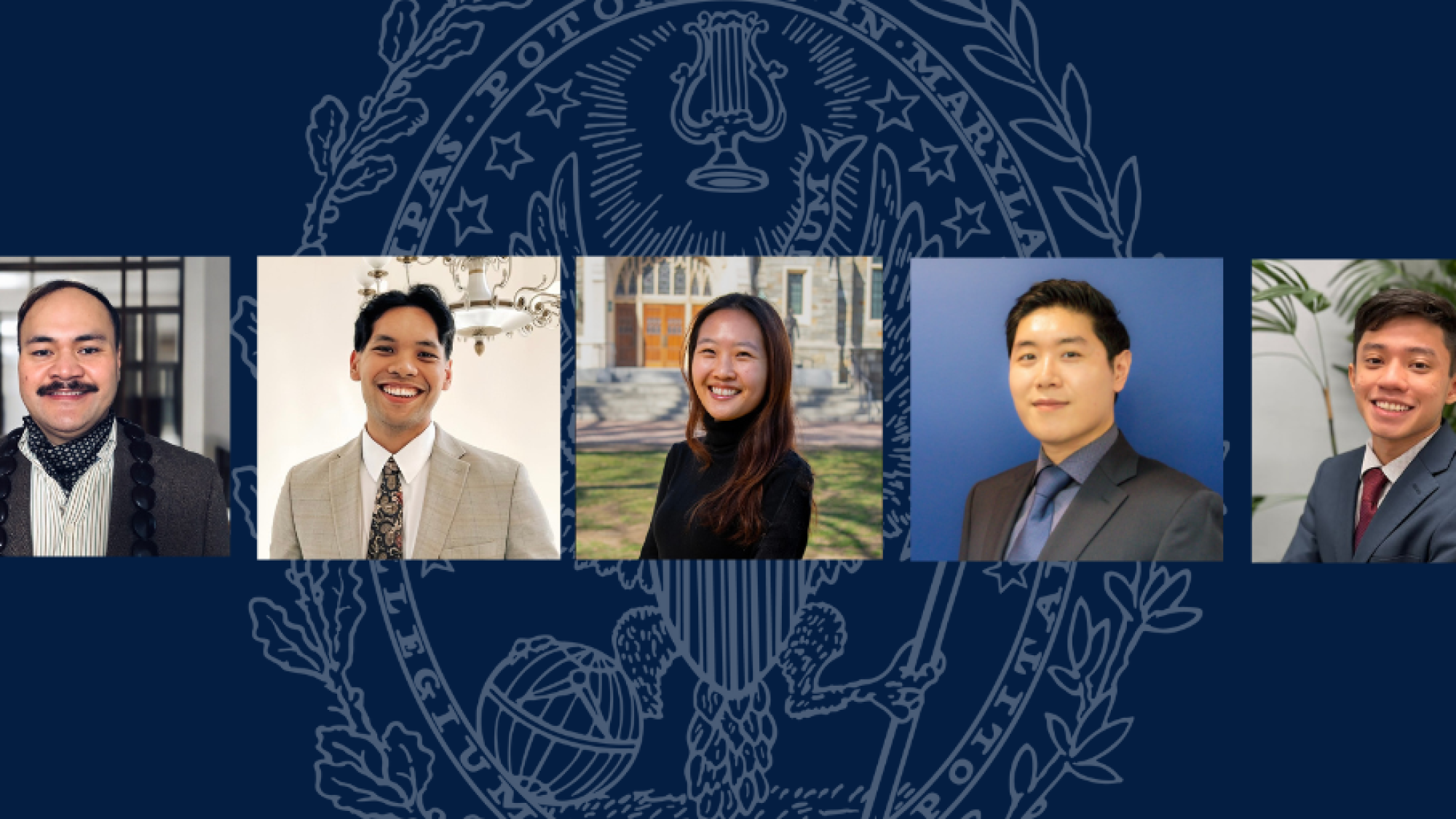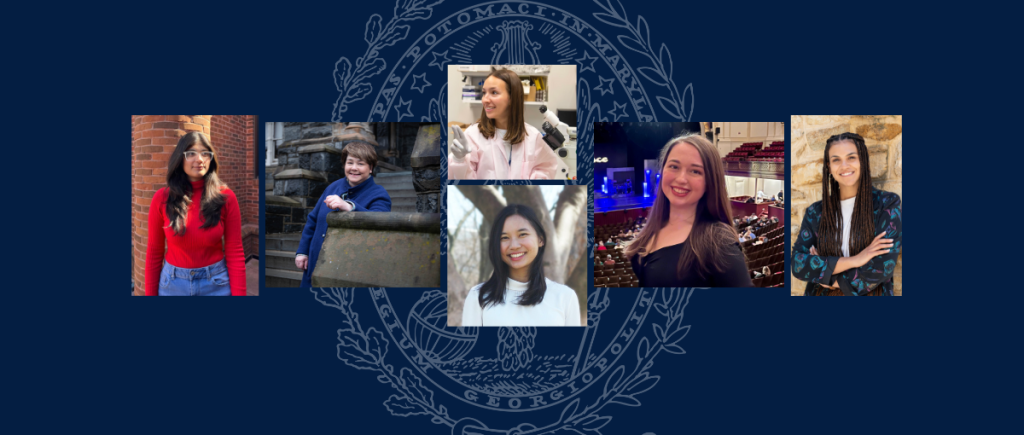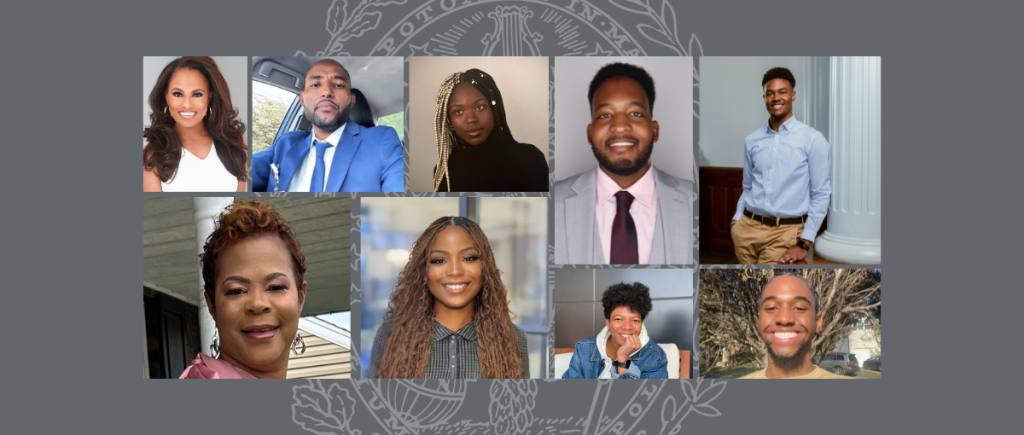The Diversity Within: Celebrating Asian American & Pacific Islander Heritage Month – Volume 1
The Graduate School joins the nation in celebrating and honoring Asian American and Pacific Islander culture, history and achievements during Asian American & Pacific Islander (AAPI) Heritage Month.
Meet four AAPI students and one triple Hoya staff member at Georgetown who share their favorite cuisines, traditions and sources of inspiration, and discover tangible ways to show solidarity with this community throughout the year.
Faces of Georgetown
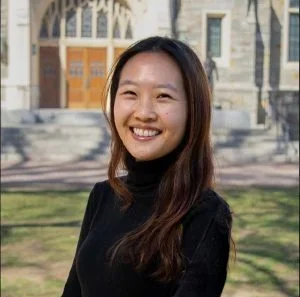
Paula Zhang (G’25) is a graduate student in the Foreign Service program at the Walsh School of Foreign Service. Zhang identified herself as Chinese American and grew up speaking Mandarin. She is always proud to represent both her Chinese and American heritage when she is abroad to showcase her experiences and cultures.

Juan San Nicolas II (G’25) is a graduate student in the Science, Technology and International Affairs (STIA) program at the Walsh School of Foreign Service. Nicolas II chose STIA to combine his interests in diplomacy with science, technology and the environment. He is an indigenous CHamoru, born and raised in Guam.
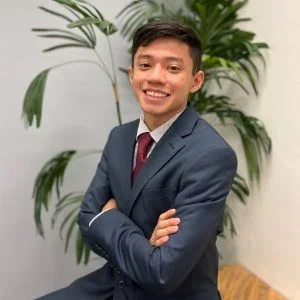
Angelo Paule (G’25) is a graduate student in the Foreign Service program at the Walsh School of Foreign Service. He believes that Georgetown is a great place to expand his horizons and interests in diplomacy from his undergraduate education in Guam. Paule is both Filipino and CHamoru, and was born and raised in Guam.
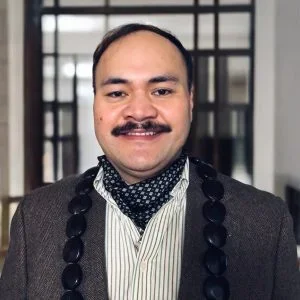
Dr. Johnny Victor Toma is from Pago Pago, American Samoa. As a triple Hoya, he earned two Master’s degrees and a doctorate degree from Georgetown: a Master of Arts in Liberal Studies (G ’11), a Master of Business Administration (G’ 14) and Doctor of Liberal Studies (G ’23). He currently serves as the Deputy Director of Finance and Administration for the BGRO Basic Science departments and the Biomedical Graduate Education (BGE) programs at Georgetown University Medical Center.
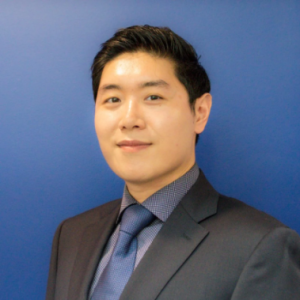
Raymond Yu (G’25) is a graduate student in Asian Studies with a concentration in Political Economy. Originally from San Francisco, Yu came to Georgetown to strengthen his knowledge of U.S.-China economic relations in trade and investments.
Cuisines & Traditions
Cuisines and the traditions surrounding them vary by culture, and within the AAPI community there is a lot to enjoy. Discover the favorite cuisines of our graduate students:
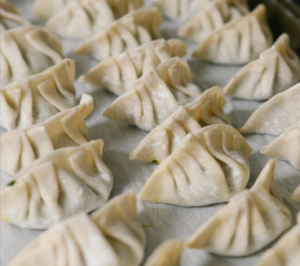
Paula Zhang: For Zhang, her favorite traditional food is her mom’s dumplings. Growing up in a predominantly white town, Zhang wished that her parents had made American food for her to bring to school or to have at home. As she grows appreciative of Chinese culture, Zhang looks forward to going home to enjoy delicious homemade dumplings and home cooking from her parents.
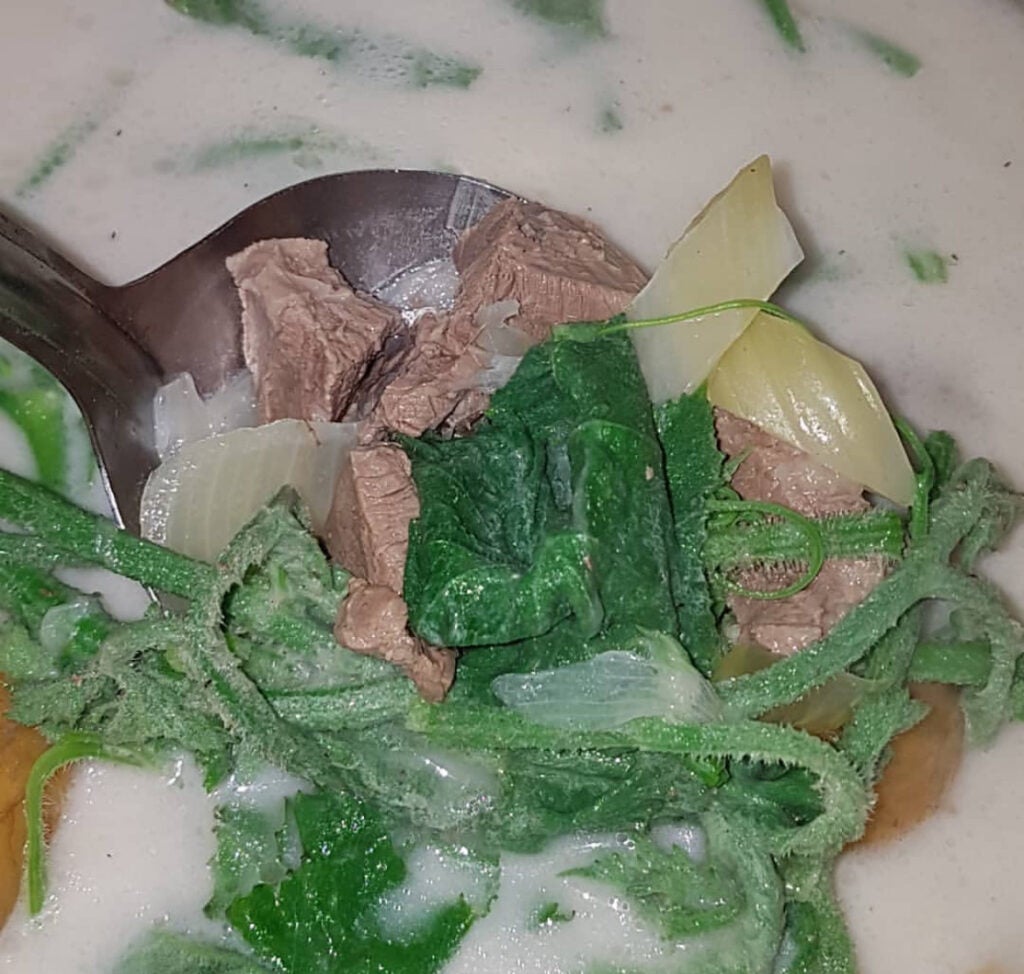
Juan San Nicolas II: Growing up in Guam, Nicolas’ favorite food from his heritage is Kadun Binadu, which is venison stewed in coconut milk. He associates the dish with spending time with family. Traditionally, this meal is made after someone in his family finishes a deer hunt, and they would all gather together to butcher the meat, stew it for several hours, and eat the soup together.

Angelo Paule:For Paule, his favorite dish is a CHamoru dish called kelaguen, which is meat marinated in lemon juice. It is a combination of sour, savory and spicy tastes all in one dish. He associates it with being around loved ones as it was often served at local gatherings (or fiestas), which are held among family, friends or within each village.
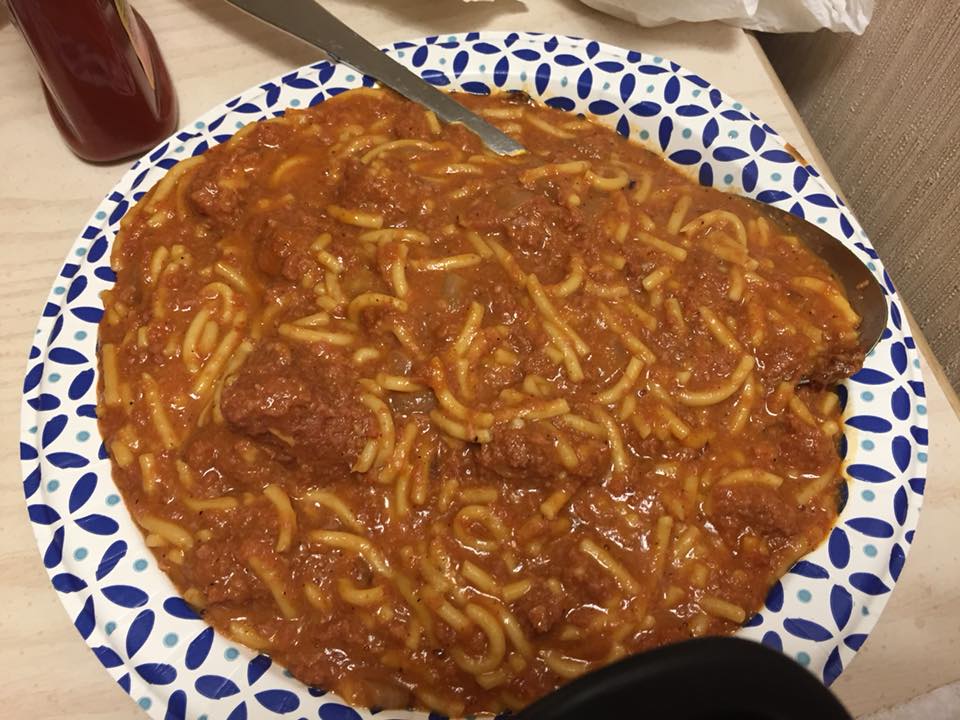
Johnny V. Toma: Toma’s favorite Samoan dish is pisupo ma le supakeli. It is corned beef, canned spaghetti and onion fried together on a skillet. Pisupo ma le supakeli is often enjoyed with rice, or taro boiled with coconut cream. “Some of our traditional Samoan desserts include jelly-filled doughnuts we call German buns, pani popo (Samoan coconut sweet rolls), koko alaisa (cocoa rice), and kopai (caramel boiled dumplings),” said Toma.
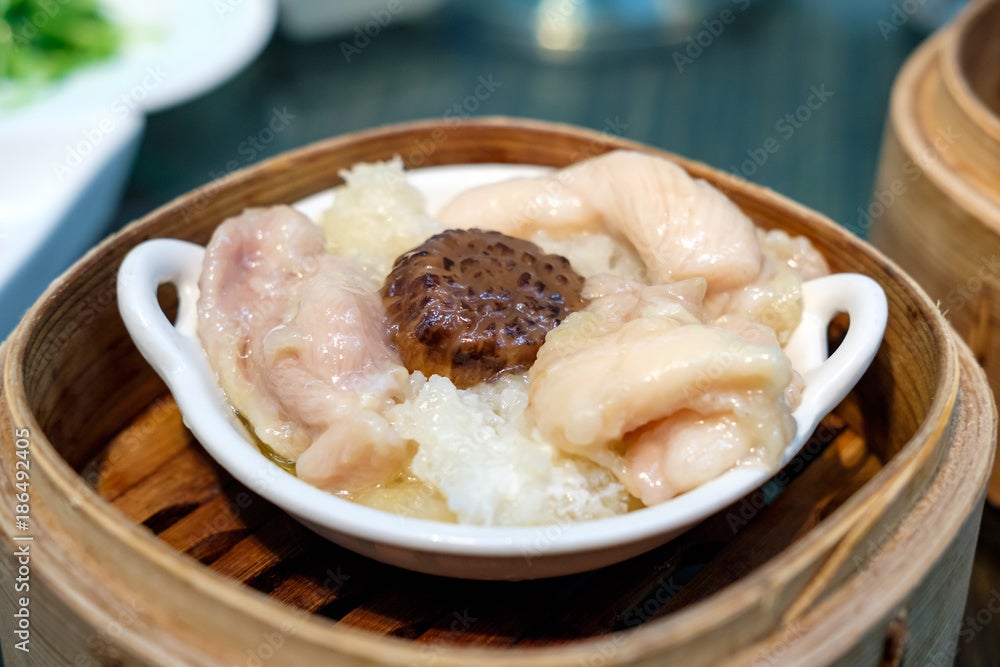
Raymond Yu: Lunar New Year is an important celebration in a lot of Asian countries. During this time, people visit their family and wish them good luck for the new year. For Yu, it is a cherished time for family reunions. “One of my favorite dishes during Dim Sum time is Steamed Chicken With Fish Maw,” he said. Often enjoying this meal with his grandparents, it brings back memories of time with them and his larger community.
Inspiration & Community Pride
The diversity within the Asian American and Pacific Islander community is broad. Explore what our graduate students find most inspiring about their heritage and the things they do to stay engaged while living at home and abroad.

ZHANG: Always happy to represent both the Chinese and American cultures within her identity, Zhang is grateful for the diverse perspectives that she grew up with. This helps cultivate empathy within her to understand and support other minority and marginalized groups.
One of the novels from an Asian author that inspires Zhang is “Babel” by R.F. Kuang. She found the novel to be a beautiful love letter to language-learning that demonstrates the power of words. “This book gave me new appreciation for the language and made me want to improve my [Chinese] skills,” said Zhang. “There are so many concepts (and funny phrases!) in Chinese culture that can’t be easily explained in any other language, and I would feel closer to my heritage if I had a strong command of them.”

NICOLAS: Family, culture and place are at the root of CHamoru culture. One of his favorite quotes comes from his former priest and role model, Father Jose Villagomez. It’s a Saipanese proverb that goes, “In na’i hao gi as Yu’us chetno-mu, para un espiha amot-mu,” which means God gave us the sickness for you to look for the medicine. Healers often served their communities through various epidemics and were often at the frontlines as leaders. For Nicolas, public service and social responsibility to his community has always been his goal. He is proud to be from Guam, knowing that his ancestors left a legacy on the land thousands of years ago for future generations to enjoy.

PAULE: Constantly learning from what his Austronesian ancestors left behind, Paule is always amazed and inspired by the ancient method of navigation using the stars. “I would say that I feel inspired in my own life by their willingness to voyage beyond the horizon and the know-how to navigate vast distances using the stars,” said Paule.
A quote that’s inspired him is from the actor, Bruce Lee: “Be happy, but never satisfied.” As a young kid, Paule never thought that he would end up in DC, let alone attend Georgetown. Being here now, this quote helps him remain grounded and remember that even though he’s come so far, there is always more to learn.

TOMA: As a Samoan, Toma is proud of Samoan history and contributions to the world. Their history dates back about 3000 years ago, when they discovered and inhabited the islands of Polynesia. “ We may be a tiny minority in the world but our people have big ambitions and have made significant splashes around the globe,” said Toma.
A novel that inspires Toma is Ola by Samoan author Albert Wendt. This book emphasizes embracing the individualistic values of Western society to a profound appreciation for the communal way of life that nurtured Samoan society and culture. “For Samoans in the 21st century, it is important to cultivate a healthy balance between the two worldviews,” said Toma.

YU: During his tenure at a nonprofit, Yu assisted elders who only spoke Cantonese and Mandarin with their legal needs, helping to translate confusing language in order for them to better cope with post-pandemic economic challenges. To Yu, this experience was deeply meaningful because amid the surge of AAPI hate crimes, he was able to pour back something good into his community.
Showing Solidarity
Celebrating and recognizing the contributions of members in the Asian, Asian American and Pacific Islander community goes beyond a set number of days.
Throughout the year, be curious and ask friends and colleagues about their heritage, including what they enjoy and the challenges they face. Consider what you can do to make an effect locally and globally through policy. Taste the various cuisines, and explore events and resources that honor AAPI culture and heritage.
– By Jessica Marr (G’19) and Maya Nguyen
